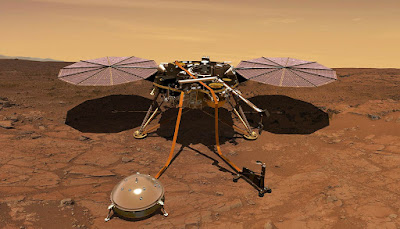FLEETS OF ‘NANOCARDBOARD’ AIRCRAFT COULD EXPLORE MARS
A fleet of tiny "nanocardboard" airplane could help explore Mars, scientists say.
They each evaluate about as long as a fruit fly and have no moving components.
This summer, NASA plans to introduce its next Mars wanderer, Determination, which will carry with it the first airplane to ever before fly on another planet, the Mars Helicopter. As the first of its type, the Mars Helicopter will carry no tools and gather no data—NASA explains merely flying it at all as "high-risk, high-reward" research.
With the dangers of extraterrestrial trip in mind, scientists are recommending a various approach to exploring the skies of various other globes.
judi bola terpercaya karier thiago alcantara
Their leaflets are layers of nanocardboard, which levitate when bright light strikes them. As one side of home plate warms up, the temperature level differential obtains air distributing through its hollow framework and shooting from the corrugated networks that give it its name, thrusting it off the ground.A brand-new study shows nanocardboard's flying and payload-carrying capcapacities in an atmosphere just like that of Mars. The thinner atmosphere there would certainly give the leaflets an increase, enabling them to carry payloads 10 times as huge as they are. The weak Martian gravity would certainly further improve their abilities.
"The Mars Helicopter is very interesting, but it is still a solitary, complicated machine," says Igor Bargatin, aide teacher in the mechanical design and uses auto technicians division at the College of Pennsylvania. "If anything fails, your experiment mores than, since there is no chance of fixing it. We're suggesting a completely various approach that does not put all your eggs in one basket."
Bargatin's team has been exploring and enhancing their nanocardboard design since 2017. Inspired by the common paper product packaging material, they worked together with scientists at the Singh Facility for Nanotechnology to accomplish a record-setting proportion of weight and stiffness, as reported in a 2018 Nature Interactions paper.
Such as paper cardboard and various other "sandwich organized compounds" used in architecture and air travel, nanocardboard's material residential or commercial homes come from corrugation. Including a hollow plate of light weight aluminum oxide wall surfaces that are just a few nanometers thick, that corrugation is a routine pattern of networks covering home plate, which improve its flexing stiffness and prevent cracks from propagating.
The scientists are currently using a low-pressure test chamber to study nanocardboard's ability to levitate when bright light shines on it.
These networks are also in charge of the plates' ability to levitate, as producing a temperature level differential generates an air present that flows through their hollow framework.



